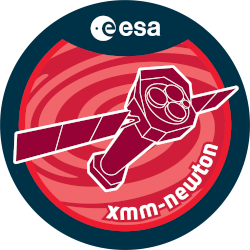

| Proposal ID | 014917 |
| Title | X-ray absorbed, broad-lined, red AGN and the Cosmic X-ray Background (CXRB) |
| Download Data Associated to the proposal | https://nxsa.esac.esa.int/nxsa-sl/servlet/data-action-aio?obsno=0149170101 |
| DOI | https://doi.org/10.5270/esa-57wl3e0 |
| Principal Investigator, PI | Dr Belinda Wilkes |
| Abstract | The Two Micron All-Sky Survey(2MASS) is compiling a sample of new, red, activegalaxies (AGN) whose number density rivals that of optically selected AGN. Theirtypically high optical polarization suggests substantial obscuration toward thenuclear energy source. Chandra observations show weak, hard X-ray emissioncompared with normal, low-redshift AGN suggesting that these, mostlybroad-lined, AGN represent the X-ray absorbed population predicted by modellingof the Cosmic X-ray Background (CXRB). We request XMM time for a subset of thesesources to obtain higher signal-to-noise spectra to: 1: determine the spectralindex and absorbing column density, 2. determine their contribution to the CXRB,3. look for reflected/scattered light expected from their high polarisation. |
| Publications |
|
| Instrument | EMOS1, EMOS2, EPN, OM, RGS1, RGS2 |
| Temporal Coverage | 2003-04-24T22:38:01Z/2003-08-01T14:35:14Z |
| Version | 17.56_20190403_1200 |
| Mission Description | The European Space Agencys (ESA) X-ray Multi-Mirror Mission (XMM-Newton) was launched by an Ariane 504 on December 10th 1999. XMM-Newton is ESAs second cornerstone of the Horizon 2000 Science Programme. It carries 3 high throughput X-ray telescopes with an unprecedented effective area, and an optical monitor, the first flown on a X-ray observatory. The large collecting area and ability to make long uninterrupted exposures provide highly sensitive observations. Since Earths atmosphere blocks out all X-rays, only a telescope in space can detect and study celestial X-ray sources. The XMM-Newton mission is helping scientists to solve a number of cosmic mysteries, ranging from the enigmatic black holes to the origins of the Universe itself. Observing time on XMM-Newton is being made available to the scientific community, applying for observational periods on a competitive basis. |
| Creator Contact | https://www.cosmos.esa.int/web/xmm-newton/xmm-newton-helpdesk |
| Date Published | 2004-09-12T00:00:00Z |
| Last Update | 2025-08-04 |
| Keywords | "XMM", "xmm time", "noise spectra", "substantial obscuration", "scattered light", "density rivals", "broad lined", "hard xray emission", "optical polarization", "low redshift agn", "spectral index", "nuclear energy source", "red agn", "x ray absorbed", "absorbing column density", "sky survey2mass", "active galaxy agn" |
| Publisher And Registrant | European Space Agency |
| Credit Guidelines | European Space Agency, Dr Belinda Wilkes, 2004, 'X-ray absorbed, broad-lined, red AGN and the Cosmic X-ray Background (CXRB)', 17.56_20190403_1200, European Space Agency, https://doi.org/10.5270/esa-57wl3e0 |